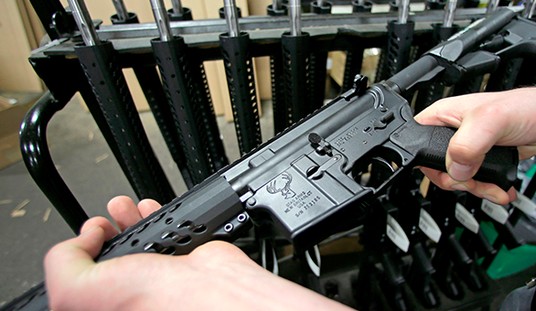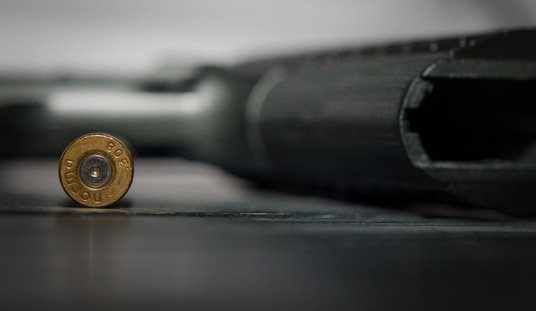[Article originally appeared at Socionomics Institute website]
“Random, multiple-victim shootings make society fearful.” Most people would agree with that sentence. But as you are about to see, new data posit a radical re-ordering of the idea as follows: “A fearful society is more likely to suffer multiple-shooting violence.”
As multiple-victim shootings increased in the United States over the past year, pundits blamed Hollywood, violence-enamored culture and easy access to guns.
But we found data that argue otherwise. Figure 1 shows the NYSE Composite Index—a broad measure of over 2000 stocks—plotted against all the data compiled by the Brady Campaign to End Gun Violence, a gun-regulation advocacy group.1 The chart suggests a strong connection between the social mood trend and multiple-victim shootings.
We carefully examined the data and found only two duplicate entries. After deleting them, we added the August 5 Sikh Temple attack and the August 13 Texas A&M shooting. We indexed the list and graphed the daily sum of people killed and wounded in the 432 multiple-victim shooting incidents since 2005. Finally, we smoothed the graph using a 40-day moving average.
Social mood trends divide the chart into four main sections, two of them positive (shaded green) and two of them negative (shaded brown). Figure 1
Note how closely the shooting data follow the trends in the stock market. Multiple-victim shootings produced few casualties during most of the 2005-2007 uptrend. After the 2007 mood peak and as stocks fell, the number of victims trended markedly higher. The numbers then peaked just a month after the March 2009 low in stocks and shootings remained high for the rest of 2009, lagging similarly to other expressions of mood, such as economic statistics and incidents of political unrest. As mood continued to wax positive, multiple-victim shooting casualties trended lower, ultimately bottoming just a month after the May 2011 stock peak.
Without the benefit of the socionomic insight, this chart would be a classic example of seemingly unrelated social expressions—the stock market, multiple-victim shootings—marching in near-lockstep for no apparent reason. Instead, with the socionomic insight, the chart provides compelling evidence that a third factor—unconscious social mood—drives both data series.
The connection: Social mood influences the aggregate attitudes, feelings, well-being and actions of society. This influence extends to the minds of people who decide to shoot—or not to shoot—multiple victims.
The columnist Peggy Noonan wrote eloquently about the Aurora shootings in her July 27 Wall Street Journal column:
[There] are unstable people among us, and they are less defended against dark cultural messages. The borders of the minds of the unstable are more porous. They let the darkness in. You can go to a horror movie and be entertained or amused: “This is scary, I love getting scared, and I love it because I know it isn’t real.” But the unstable are not entertained by darkness. They let it in. They are inspired by it.2
Ms. Noonan went on to blame Hollywood for the shootings, calling for regulations. Yet, mass killers have been around for centuries without movies to inspire them. They find their inspiration and opportunity not in the events but in the prevailing social mood of the time. Dennis Elam, a professor at Texas A&M University and a contributor to The Socionomist, explained it well in his response to Noonan’s article:
Ms. Noonan has the causality reversed … . Her theme is that Hollywood has caused moviegoers to seek the negative side of humanity. But is it possible that people with negative moods seek dark- themed entertainment? … audiences are no longer interested in Jack Nicholson’s version of the Joker. His garish, comic figure was in tune with the mood of 1989. Ditto for Dustin Hoffman’s Captain Hook in 1991. Both villainous characters appeared during an upbeat social mood from 1984 to 2000. … But Heath Ledger’s character [in] “The Dark Knight,” tag line the City Has No Hope (2008), was all too emblematic of what was about to happen worldwide. Now we have unrest and violence from Syria to Afghanistan, Europe staggers under its social contract and the U.S. is mired in the slowest recovery in decades. Art imitates life rather than drives it.3
While many multiple shootings involve drugs, alcohol, mental illness and/or handy guns, the most notorious and deadly multiple shooters seem to have a coldly calculated “me against the world” mentality. This is an extreme, individual expression of the “us against them” polarization that grips society during large-degree negative social mood trends. Norway’s Anders Behring Breivik, who said he killed 77 people last year to protect Norway from multiculturalism, offers a prime example.
When society grows more pessimistic, it also becomes more fearful and angry. Other social expressions—such as the trend toward darker movies, apocalyptic thinking, fear and uncertainty about the future, the rise of authoritarianism and militant anti- authoritarianism, the militarization of local police and the increase in multiple shootings—are all results, not causes, of the public mood.
Ben Hall contributed to this report.
CITATIONS
1. Abelson, B., & Keller, M. Interactive map: The U.S. shooting epidemic. The Daily Beast. Retrieved from http://www.thedailybeast.com/articles/2012/07/24/interactive-map-the-us-shooting-epidemic.html
2. Noonan, P. (2012, July 27). Noonan: The Dark Knight Rises. The Wall Street Journal. Retrieved from http://online.wsj.com/article/SB10000872396390443343704577549390094138950.html
3. Dennis Elam, comment, Noonan: The Dark Knight Rises. The Wall Street Journal. Retrieved from http://online.wsj.com/article/SB10000872396390443866404577563080068227816.html
http://www.socionomics.net/human-events-trial
Get a free 19-page report covering various social issues with a perspective you won’t find anywhere else, plus an exclusive offer from the Socionomics Institute.








Join the conversation as a VIP Member